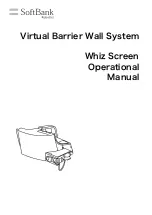
A-20
186638-1CD
186638-1CD
Appendix A
A.1 Glossary
Q
GP8 EduCart
Proximity Sensor
A non-contact sensing device used to sense when objects are a short
distance away, and it can determine the distance of the object. Several
types include: radio frequency, magnetic bridge, ultrasonic and
photoelectric. Commonly used for: high speed counting, sensing metal
objects, level control, reading coding marks and limit switches. See
Pulse Coordinates
YASKAWA robots define robot joint axes position in degrees for revolute
joints. Pulse is also another way to specify robot joint position, and it does
so in robot motor encoder pulse counts.
Q
Quality Assurance (QA)
Describes the methods, policies and procedures necessary to conduct
quality assurance testing during design, manufacturing and deliver
phases of creating, reprogramming, or maintaining robots.
Quasi-static Clamping
A type of contact between a person and part of a robot system where the
body part can be clamped between the moving part of the robot system &
another fixed or moving part of the robot cell
R
Range of Motion
The full movement potential of the robot.
Reach
The volume of space (envelope), which a robot's end-effector can reach in
at least one orientation.
Real-time System
A computer system in which the computer is required to perform its tasks
within the time restraints of some process simultaneously with the system
it is assisting. The computer processes system data (input) from the
sensors for the purpose of monitoring and computing system control
parameters (outputs) required for the correct operation of a system or
process. The computer is required to do its work fast enough to keep pace
with an operator interacting with it through a terminal device (such as a
screen or keyboard). The operator interacting with the computer has
access, retrieval and storage capability through a database management
system. System access allows the operator to intervene and alter the
system's operation.
Record-playback Robot
A manipulator for which the critical points along desired trajectories are
stored in sequence by recording the actual values of the joint-position
encoders of the robot as it is moved under operational control. To perform
the task, these points are played back to the robot's servo-system. See
78 of 88











































